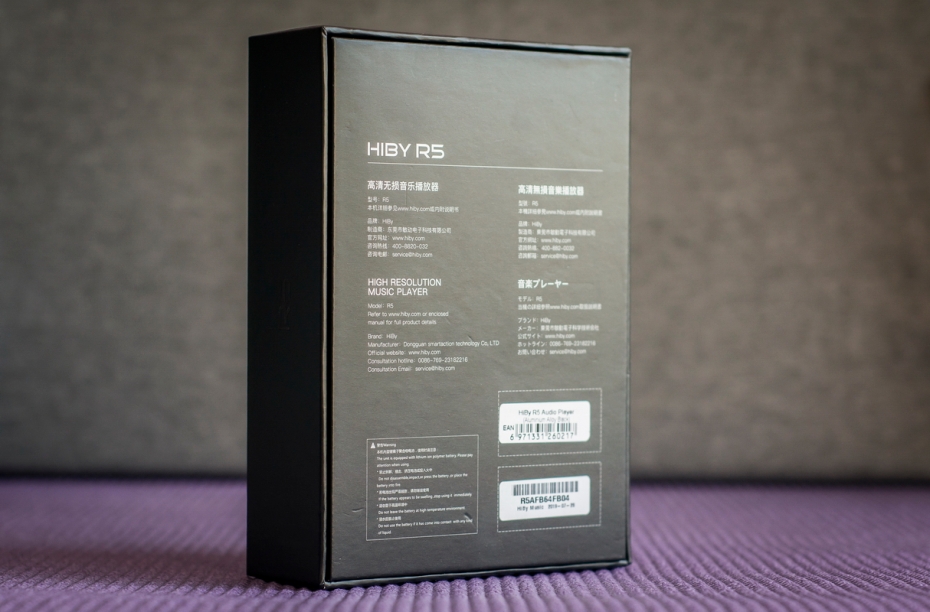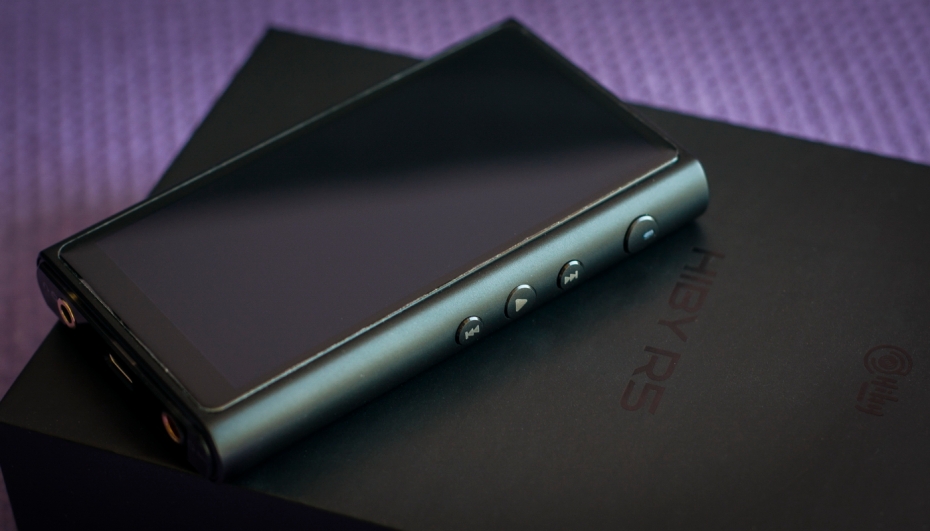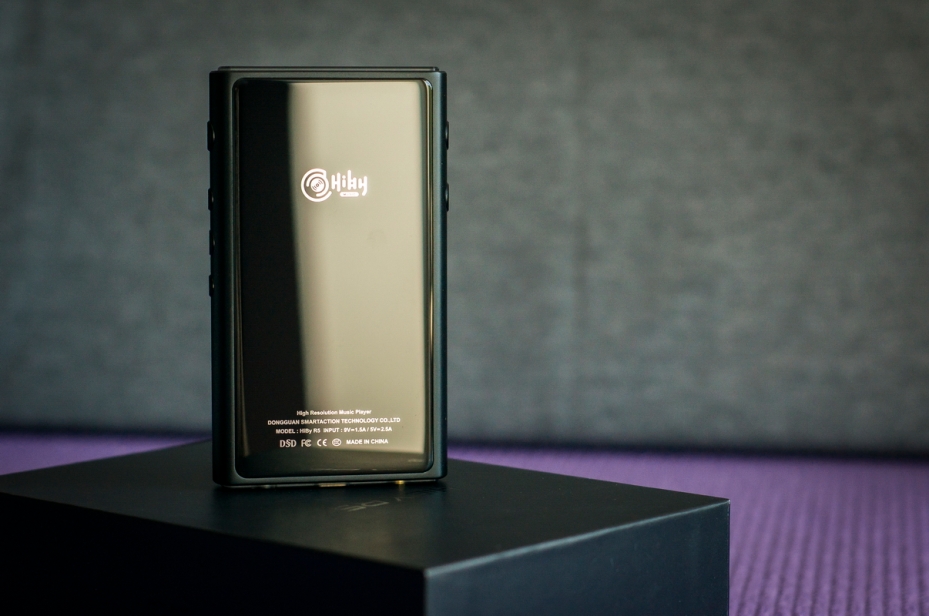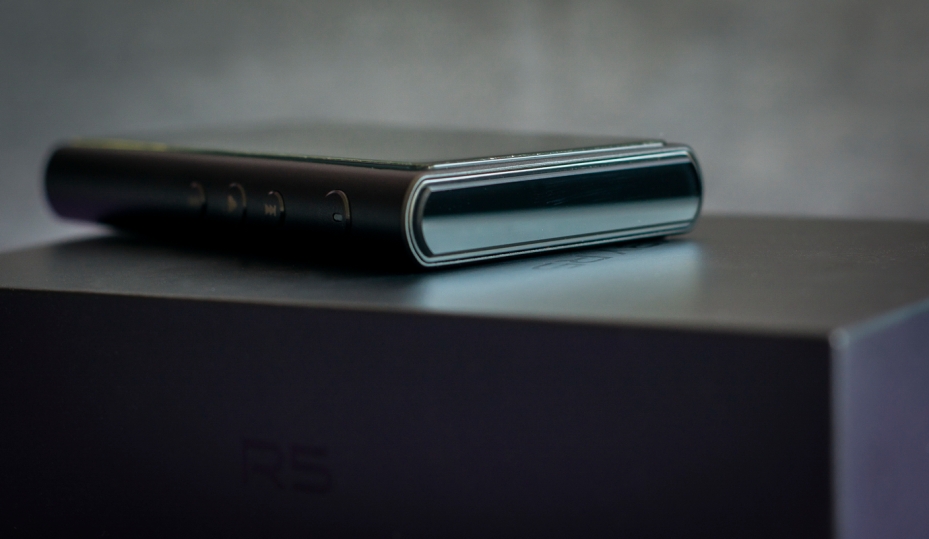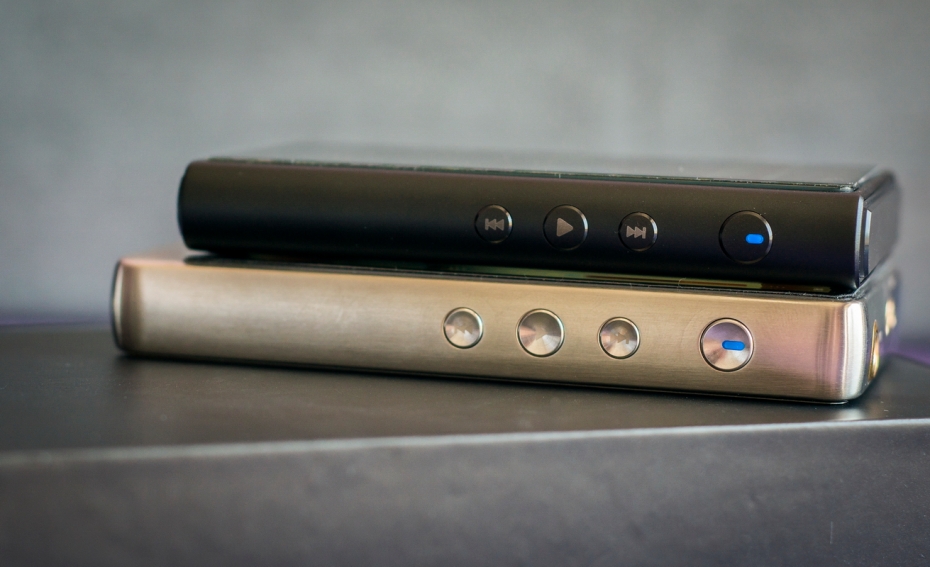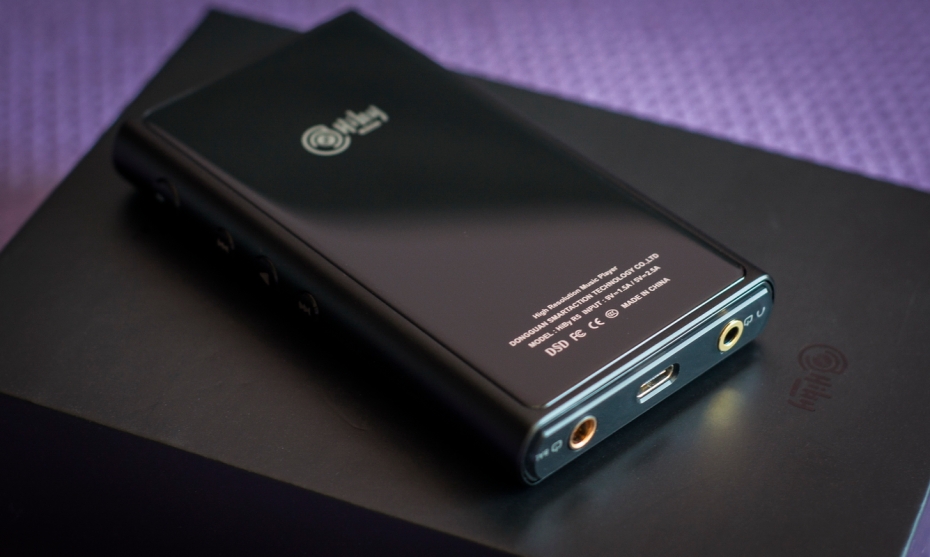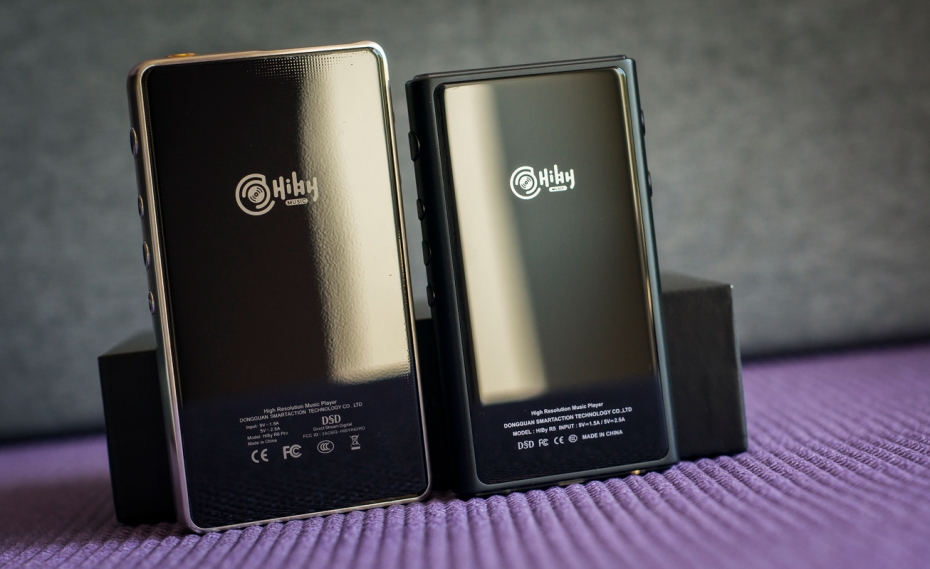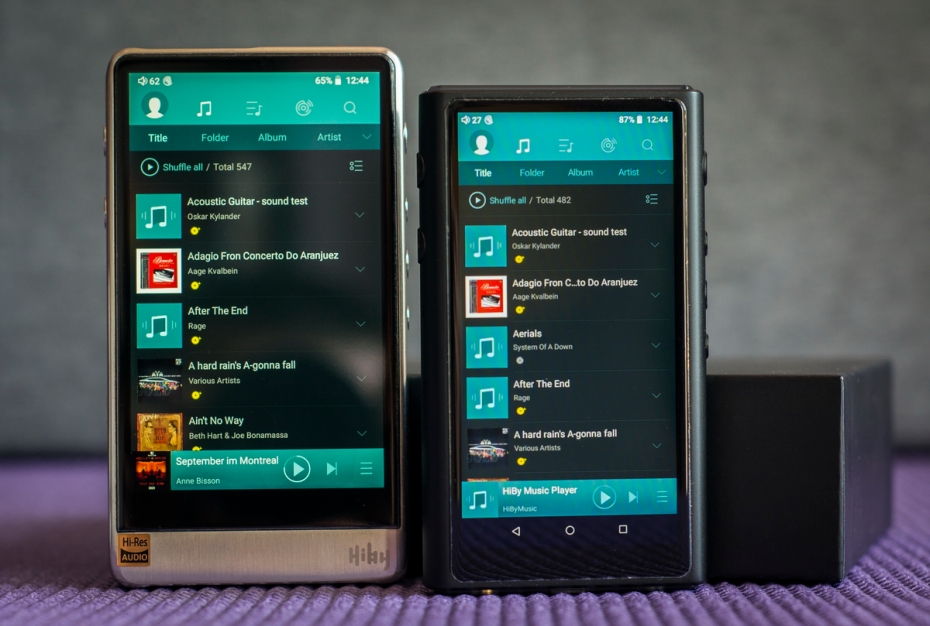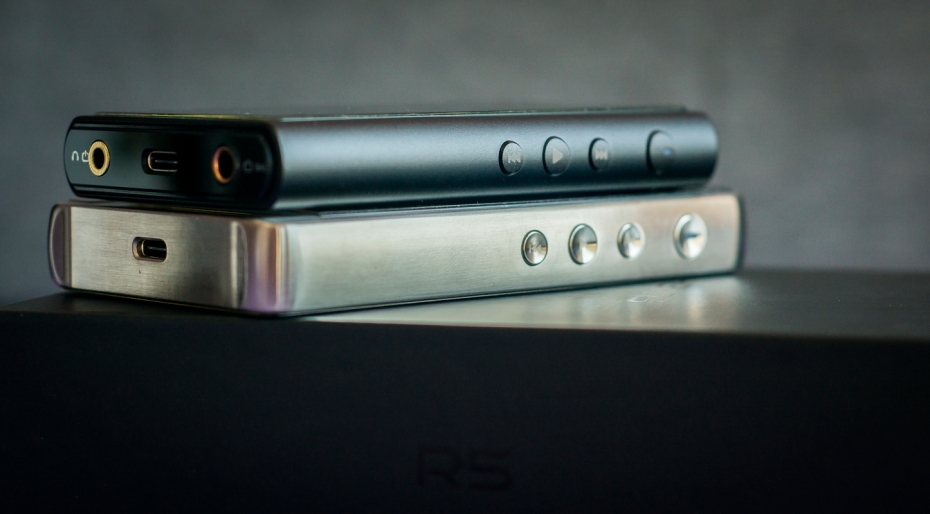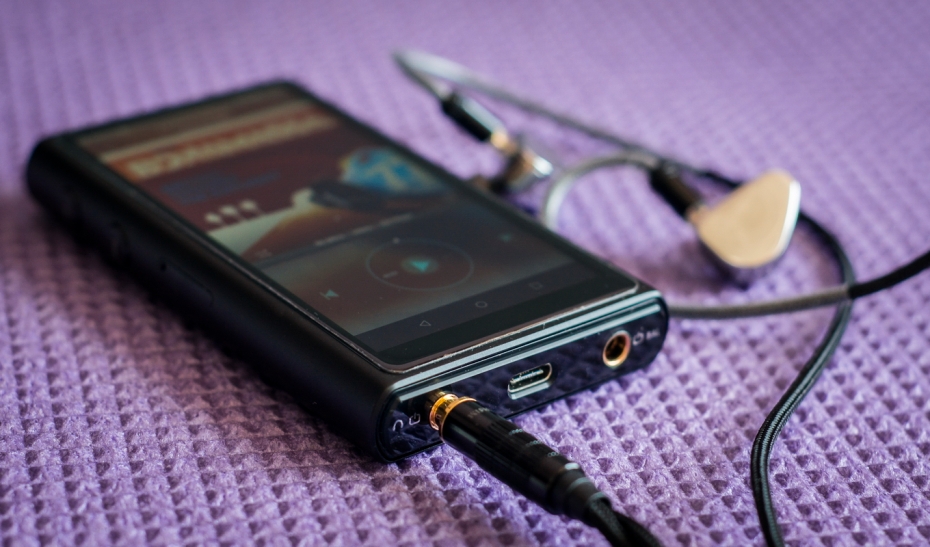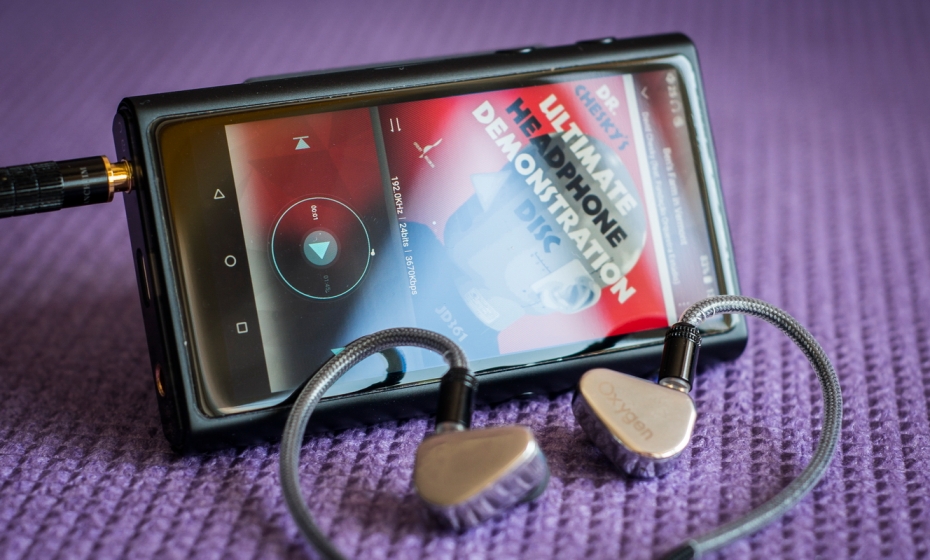The product was provided to me free of charge for the review purpose in exchange for my honest opinion.
Manufacturer website:
Hiby. Available for sale on
MusicTeck.
Intro.
It probably sounds strange, but I feel bad for anybody who is in the market looking for a new DAP, especially if you are after more affordable mid-fi level audio players. When it comes to high end summit-fi flagship DAPs, the choices are more manageable, and entry level market is less busy with some turning their attention to small Bluetooth receivers instead. But mid-fi DAP market is starting to get flooded with feature-packed affordable DAPs.
Some of these mid-fi DAPs packing too much under the hood, and some are getting too big in size. It’s a good strategy to capture attention of audio enthusiasts on a budget who are looking for the best price/performance ratio. But there are others in search of mid-fi DAPs as an alternative to their big and heavy flagship players they would rather keep at home, and instead get something more compact and still powerful enough on the go.
And that’s exactly what Hiby delivered in their new R5 release - Mini-Me scaled down version of their flagship R6Pro DAP. I enjoyed spending the last few weeks with R5 and now would like to share with you about this latest release from Hiby.
Unboxing and Accessories.
R5 arrived in all black nice compact packaging box. The cover of the box had a soft foam inner lining to protect the DAP wedged inside of a foam tray cutout. Other accessories could be found at the bottom in two storage boxes. Overall, the packaging is very straight forward, nothing fancy.



Accessories included a tempered glass protector for the front and film protector for the back, push-pin tool to eject micro SD card tray, a premium usb-c charging and data cable, a clear transparent TPU case, and a manual. One film screen protector was already applied to a display, but I found it to be sticky and rubbery, and I removed it right away to improve touch sensitivity of the screen. The same material film protector was intended for the back, and I didn’t bother with it. The front tempered glass looked too small for the display, probably intentionally since the display screen has curved edges and tempered glass usually won’t stick to the edges.



R5 TPU clear case is very good, similar to the one included with R6Pro. I like this kind of cases because they let you see the design details of the DAP without covering it up, and at the same time enhance the grip and protect from minor bumps. I don’t know if it will turn yellowish or discolored down the road, only time will tell. But so far R6Pro case is still clear. The only thing I don’t like about it the glass back of R5 sticking to the case, creating a visual “splatters”, but it’s really just a nitpicking.



 Design.
Design.
After dealing with so many larger size DAPs, it feels good to hold a small compact player in my hand. With dimensions of 107.7 x 61.2 x 15.6 (mm) and weight of about 158g, it easily fits in a palm of my hand and allows touch screen navigation with just a thumb. It’s light, but has a little heft to it, and with a clear TPU case the grip feels secure.
The front of R5 is filled with 4” touch screen, a good viewing angle thanks to IPS display, and a decent resolution for this size, 540x1080. The bezel around the display is thin. Left and right sides are smooth and rounded, the only metal (aluminum) sides of the DAP. The top, the bottom, and the back are all glass, more reasons to keep R5 in a case. The display itself is bright and has rich colors, very similar to R6 and R6Pro.

The right side of the DAP has a power button at the top with a built-in LED, the same as R6/R6Pro where the light changes depending on the playback format or when charging. Below it you have hw playback buttons with a slightly larger Play/Pause in the middle and skip buttons on each side. The left side has volume up/down buttons and micro SD card tray. The TPU case has cutouts for all the buttons, so they are easy to access, except for flash memory which is covered. At the bottom in the middle you have USB-C port (for charging, data transfer, Digital Out/SPDIF, and DAC functionality), and symmetrically on each side a single ended 3.5mm HO/LO on the left and a balanced 4.4mm HO/LO on the right. Btw, balanced output is very powerful, supporting
564mW @ 32ohm load. Both SE and BAL ports could be switched between Low and High gain.







 Under the hood.
Under the hood.
In the heart of R5 you will find a dual Cirrus Logic MasterHiFi series CS43198 DAC. This is a relatively new DAC, released in 2017. I saw it being featured in a few other DAPs after its introduction, but surprisingly not as widespread as I would expect it to be. I think it’s getting a second wind with this R5 release and I’m aware of another DAP release around the corner using the same chipset.
To keep it running fast, Hiby used the same Snapdragon 425 processor as R6Pro, even at the same max clock speed of 1.4GHz, and without surprises the AnTuTu 3D benchmark score of R5 is nearly the same as R6Pro. The internal storage is only 16GB, but with micro SD card you can expand it to 512GB, or perhaps higher in the future.
It features a decent size 3500 mAh battery, with 18hrs (in SE) and 11hrs (in BAL) play time. The charging supports QC3.0 standard, including use of USB-C power supply of 9V/1.5A for a fast charging. Other notable features are Bluetooth 4.2 with aptX/HD, LDAC, and even the new high bandwidth UAT codec support. Two-way Bluetooth (Rx/Tx) is supported as well, so you can use R5 as a wireless BT DAC.
Just like its big brother, expect a fully open Android 8.1 OS with Google Play store and Direct Transport Architecture with Android SRC (sample rate conversion) bypass to support all lossy and lossless formats (up to DSD256). With a dual channel WiFi and Google Play, you are not limited to internal storage playback, and can stream using any of the popular apps. And for internal playback, you can download any app you desire, or use already pre-installed HibyMusic which is a very capable audio player.



 Sound analysis.
Sound analysis.
I analyzed
R5 sound with U18t while playing a variety of my favorite test tracks, such as Agnes Obel “The curse”, Sandro Cavazza “So much better” (Avicii remix), C-Bool “Never go away”, Ariana Grande "Break up with your girlfriend", Ed Sheeran “Shape of you”, Alan Walker “Darkside”, Iggy Azalea “Black widow”, Indila “Boite en argent”, Robin Schultz “Oh child”, David Elias “Vision of her”, and Michael Jackson “Dirty Diana”. Prior to staring my sound analysis, I let R5 play in a loop for 4-5 days.
R5 DAP has a more neutral natural tonality. The sound has good dynamics, with a decent vertical expansion of the peaks and a good layering and separation of sounds, though don't expect too much airiness between layers. It's not on the same level as some high-end flagships, but the performance is solid.
Thanks to a black background, the transient response of notes on/off has a clean transition, and I was also very pleased to hear no hissing (or just a very minimum) with a number of sensitive low impedance IEMs. Considering its high output power, R5 was tuned to keep the hissing low even in high gain on 4.4mm BAL output.
The soundstage has a little more intimacy because I hear the sound being more spacious in depth (more out of your head feeling) rather than width. Soundstage width is above average, just not as wide as in some other DAPs. But that doesn't stop R5 from having accurate imaging with a good precision in placement of instruments and vocals.
3.5mm vs 4.4mm output.
The change in the sound going from SE to BAL is not too drastic. Besides the obvious difference in power where I have to raise the volume up with 3.5mm to match the same level with 4.4mm, I do hear BAL (4.4mm) to have a little more transparency (3.5mm is a little warmer in comparison) and to be a touch wider in soundstage.
 Comparison.
Comparison.
Using 64 Audio U18t as my IEMs, I volume matched in each comparison and noted the following changes while testing each DAP pair. Please keep in mind, I’m describing the sound relative to U18t.
R5 (4.4mm) vs FiiO M11 (4.4mm) - Didn't know what to expect in this comparison, considering these should be in the same price and performance category. To my HUGE surprise, they sound very close. From nearly the same soundstage expansion in both width and depth, to a very similar dynamics expansion and layering of the sounds. Even tonality is nearly the same. The only giveaway when doing A/B comparison was when I pause/idle, I can hear M11 slight hissing while R5 was nearly dead quiet. While M11 has a bigger display and dual micro SD (though with high capacity flash card, that's no longer relevant), R5 is smaller, lighter, more compact, hiss-free with sensitive IEMs, has Google Play (while M11 doesn't), and even cheaper in price, while sounding nearly the same.
R5 (4.4mm) vs Cayin N5iiS (2.5mm) - Both have a similar soundstage expansion in depth, with N5iiS being just a touch wider. Also, have a similar technical performance, though I do hear N5iiS having some improvement in dynamics and layering of the sound, with a little more air between the layers. The overall tonality is very similar, especially in mids where it's nearly identical, but with bass N5iiS has a little more slam, especially in mid-bass. Also, N5iiS treble is just a little brighter, crisper. Overall, both are compact DAPs, but R5 has fully open Android and a much faster interface, while N5iiS has a more high-res fun tuning.
R5 (4.4mm) vs Shanling M5s (2.5mm) - Starting with a soundstage, these are very similar, just with M5s having a touch more width, while depth is the same. Technical performance is also very similar when it comes to vertical dynamics of the sound expansion, along with layering and separation of the sounds. But the difference in tonality is quite noticeable. M5s has a warm tonality with a sound being more colored while in comparison R5 is more neutral and more transparent. Also, relative to using U18t in sound analysis, M5s has more bass slam, with both sub-bass and mid-bass being more elevated in comparison to a more neutral R5. Of course, in general, R5 is Android based with Google play and access to apps, while M5s is lacking all that.
R5 (4.4mm) vs theBit Opus#1S (2.5mm) - Starting with a soundstage, these are very similar, though I do hear #1S having a touch more width, while depth is the same. Technical performance is also very close, I hear a similar vertical dynamics expansion, and a similar layering and separation of the sound. The tonality is where I hear some difference, but relatively to U18t, most of the difference is in mids/vocals where #1S sounds brighter and dryer, not as refined, while R5 has a richer, more natural tonality. I was curious about this comparison because both use a dual CS43198 DAC. While there are similarities in sound, I find R5 mids to be more refined and more natural. Plus, R5 is a fully open Android DAP with Google Play access.
R5 (4.4mm) vs Hiby R6Pro (4.4mm) – Last, but not least, is R5 big brother - R6Pro. Starting with a soundstage, while R5 is above average in width and deepth, R6Pro soundstage stretches even wider when comparing their balanced outputs. Both have a similar quality imaging. In terms of a technical performance, R6Pro has an edge, as it should, with the sound being more dynamic and layered, but R5 is not too far behind. In tonality, I hear a difference with R6Pro having a little more impact in bass, slamming a little harder while both have a fast and articulate low end response. Mids sounds brighter and more revealing in R6Pro while R5 mids are smoother and a little more musical. Treble response is nearly the same. In terms of technical performance, R6Pro still has the upper flagship hand, but at nearly half the price, smaller, and lighter R5 has a very decent mid-fi level performance and also nearly dead quiet balanced output while R6Pro has some hissing with sensitive low impedance iems.




 Pair up.
Pair up.
In the following pair up testing I tried R5 with various IEMs and full size headphones, to analyze the synergy of this DAP with different monitors including low impedance and higher sensitivity, and more demanding higher impedance and harder to drive dynamic and planar magnetic headphones.
Campfire Audio Andromeda - wide soundstage with a little more depth; balanced sound signature with a smoother natural tonality and excellent retrieval of details; good bass extension with a punchy mid-bass, more neutral lower mids with a good amount of body, detailed revealing upper mids/vocals, crisp well-defined treble without any harsh peaks. Just a slight "waterfall" hissing when idling or volume is very low.
Campfire Audio Solaris - wide soundstage with a good balance between width and depth; balanced sound sig with a natural revealing tonality and excellent retrieval of details; deep sub-bass extension with a decent amount of rumble and authorative mid-bass punch, neutral lower mids with a good amount of body, natural revealing upper mids/vocals, crisp detailed and well defined treble without any harsh peaks. Just a slight "waterfall" hissing when idling or volume is very low.
 64 Audio U18t
64 Audio U18t - above average soundstage width with more depth than width; slightly mid-forward signature with a natural revealing tonality; good low-end extension with a more neutral rumble and impact, neutral lower mids with a good amount of body, natural detailed upper mids/vocals, extended natural well defined and controlled treble. No hissing.
64 Audio Fourte Noir - above average soundstage width with more depth than width; more v-shaped signature with warmer tonality; deep sub-bass rumble and harder hitting mid-bass punch, warmer thicker lower mids with more body, natural detailed upper mids, crisp airy treble. No hissing.
ZEN Omega Edition (ZOE) - above average soundstage width with more depth than width; balanced signature with a warmer thicker tonality; laidback relaxed bass, thicker body lower mids, smooth organic clear upper mids, slightly rolled off treble but still with a good smooth definition. R5 was driving these 320ohm earbuds with ease, but a little more on a warner thicker side.
Beyerdynamic T5p 2nd - didn't expect these full-size Tesla drivers to pair up that well with R5, but they did! Soundstage is wide (surprise!), almost on a holographic level; signature is nicely balanced and with a natural revealing tonality; bass extends with a deep sub-bass rumble and mid-bass punches through the mix with a good speed, overall bass is fast, deep, and articulate, lower mids are neutral with a nice amount of body, upper mids are natural, very detailed, treble is crisp and extended with a nice airy sparkle. I was pleasantly surprised with a synergy of this pair up.
Audeze EL8C - wide soundstage with a little more depth than width; signature is more mid-forward and the sound is brighter, thinner, a little drier; bass is very neutral, not as much sub-bass, lower mids are lean and upper mids/vocals are on a brighter more revealing side, treble is very crisp and with extra sparkle and unfortunately with a few harsher lower treble peaks that give the sound a metallic sheen. This particular pair up with planar magnetic drivers wasn't good.
Meze Empyrean - another big surprise how well R5 was able to drive Empyrean (only 40/100 volume in high gain). Soundstage was wide and expanded in every direction; signature is very balanced, more w-shaped with a balanced emphasis on lows/mids/highs, tonality is revealing and quite natural but a little more on a brighter side; bass extended low with a deep sub-bass rumble, mid-bass had a good solid punch, lower mids were neutral with a nice body, upper mids/vocals were natural but also quite revealing with a very good retrieval of details, treble was crisp, airy, and well controlled and well defined. While Empyrean sounded a little brighter here, the pair up was very enjoyable.
 Wired/Wireless Connection.
Wired/Wireless Connection.
If you want to use R5 with an external portable amp, you need to switch to LO in Audio settings for corresponding port. If you want to use R5 as a digital transport, just connect USB-C OTG cable and it works by default.
While testing
R5 LO w/FiiO E12A portable amp, I hear a clean transparent sound and some improvement in soundstage width. Very important here is that LO could be adjusted with a volume from R5 which is a big plus if you are connecting to external amp without volume control, like Oriolus BA300S portable 4.4mm balanced tube amp.

While testing
R5 USB-C w/iFi micro iDSD, the pair up was flawless, just connect and start using R5 as a transport to drive this external DAC/amp. I found this pair up to be very good, with a similar natural tonality as R5, but on top of that an improved dynamics and soundstage expansion.


For a Bluetooth wireless pair up, I used
Sennheiser Momentum 2 Wireless headphones (HD1 M2 AEBT). The initial pair up was fast and later it paired up automatically every time headphones where turned on. R5 notification bar was showing battery status of headphones, I found the operating range to be about 40ft, and I was able to control volume, play/pause, and skip tracks from Momentum 2 headphones. The sound was very transparent, crystal clear, with a nice sub-bass rumble. Typically, Momentum 2 wireless sounds a little warmer, perhaps extra transparency here was due to aptX HD pair up which was enabled on R5.




With access to WiFi, you can run any streaming service, of course. I don’t have any premium accounts, at least not yet, so my testing is usually limited to a free Spotify account. Here the sound was on par with playing the same tracks from micro SD storage. And as I was typing this review, Hiby just made the announcement that later in September their R5 DAP will be officially MQA enabled, assuming with upcoming fw update.

 Conclusion.
Conclusion.
I did start my review on a bit of a negative note because DAP market is saturated, and people are overwhelmed, based on what I hear from my readers. And while being “overwhelmed” with too many choices can drive some audio enthusiasts crazy, it can also push manufacturers to be more competitive, trying to come up with something different and more unique, to stand out from crowd in order to be noticed.
While R5 certainly does sound good and has a very fast performance fueled by its Snapdragon processor, I think what makes it standout is a very compact pocket friendly size. On top of that, add the flexibility of both 3.5mm and 4.4mm Headphone and LO outputs. The Android benchmark performance is nearly identical to R6Pro, you have access to Google Play store and all the apps, you can use it with your aptX/HD and LDAC headphones or as BT wireless LDAC receiver, you can stream (MQA coming soon) or play from local storage (supporting up to 512GB uSD), you can use it as a digital transport or pair its LO with external amp and adjust the output from R5. Its audio performance will not outpace other flagships, but its design flexibility and the number of features is quite impressive on the go!












































